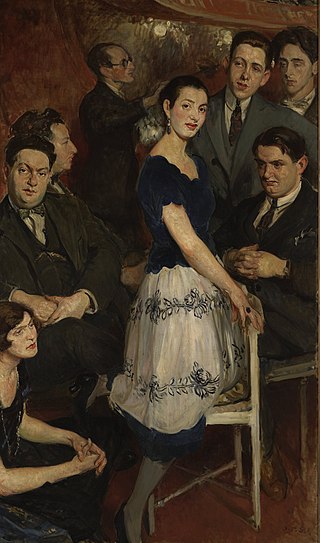
Louis Joseph Andriessen was a Dutch composer, pianist and academic teacher. Considered the most influential Dutch composer of his generation, he was a central proponent of The Hague school of composition. Although his music was initially dominated by neoclassicism and serialism, his style gradually shifted to a synthesis of American minimalism, jazz and the manner of Stravinsky.

Darius Milhaud was a French composer, conductor, and teacher. He was a member of Les Six—also known as The Group of Six—and one of the most prolific composers of the 20th century. His compositions are influenced by jazz and Brazilian music and make extensive use of polytonality. Milhaud is considered one of the key modernist composers. A renowned teacher, he taught many future jazz and classical composers, including Burt Bacharach, Dave Brubeck, Philip Glass, Steve Reich, Karlheinz Stockhausen and Iannis Xenakis among others.

"Les Six" is a name given to a group of six composers, five of them French and one Swiss, who lived and worked in Montparnasse. The name, inspired by Mily Balakirev's The Five, originates in two 1920 articles by critic Henri Collet in Comœdia. Their music is often seen as a neoclassic reaction against both the musical style of Richard Wagner and the impressionist music of Claude Debussy and Maurice Ravel.

A viola concerto is a concerto contrasting a viola with another body of musical instruments such as an orchestra or chamber music ensemble. Early examples of viola concertos include Telemann's concerto in G major and several concertos by Carl Stamitz and other members of his family. The first concertante work to use the viola without caution was Mozart's violin and viola Sinfonia Concertante.

La Création du monde, Op. 81a, is a 15-minute-long ballet composed by Darius Milhaud in 1922–23 to a libretto by Blaise Cendrars, which outlines the creation of the world based on African folk mythology. The premiere took place on 25 October 1923 at Théâtre des Champs-Élysées in Paris.

Le Bœuf sur le toit, Op. 58 is a short piece for small orchestra by the composer Darius Milhaud, written in 1919–20. Milhaud conceived the piece as incidental music for any one of the comic silent films of Charlie Chaplin, but it received its premiere as the music for a ballet staged by Jean Cocteau in February 1920.

Henri-Gustave Casadesus was a violist, viola d'amore player, composer, and music publisher.

Henrique José Pedro Maria Carlos Luis Oswald was a Brazilian composer and pianist.

La cheminée du roi René, Op. 205, is a suite in seven movements for wind quintet, composed in 1939 by the French composer Darius Milhaud. The title alludes to a Provençal proverb playing on words for 'fireplace', 'chimney' and 'promenade': the 15th-century King of Sicily René d'Anjou is said to have enjoyed walks in the winter sun of Provence.
Henri Collet was a French composer and music critic who lived in Paris.

The Pasdeloup Orchestra is the oldest symphony orchestra in France.
This is an incomplete list of plays for which incidental music has been written. A very large number of such works have been written, and to limit the size of this article, only items where the composer and/or the playwright has a specific Wikipedia article should be included.
Marcel-François-Georges Delannoy was a French composer and critic. He wrote operas, ballets, orchestral works, vocal and chamber works, and film scores.
L'Album des Six is a suite of six piano pieces published in 1920 by Eugène Demets, and written by the members of the group of French composers known as Les Six.
Little (Chamber) Symphony No. 3, Op. 71 by Darius Milhaud is a work for chamber orchestra that was composed in 1921. The work is also known by the title Sérénade. This work is not to be confused with Milhaud's Symphony No. 3, which is known as Te Deum.
The Piano Quintet in C major, Op. 18, by Henrique Oswald was finished in 1895. Like most of the piano quintets after the Schumann's, it is scored for piano, 2 violins, viola and cello. A typical performance takes 27–31 minutes.
Manfred Kelkel was a 20th-century French musicologist and composer of contemporary music. A pupil of Darius Milhaud at the Conservatoire de Paris, he got interested in the music of Russian composer Alexander Scriabin, whose latest works influenced his own compositions. His work on Scriabin and a certain esoteric aesthetic of music are authoritative.

Scaramouche, Op. 165, is a suite composed by Darius Milhaud in 1937. The suite is based on incidental music Milhaud wrote for two theatrical productions: Le Médecin volant and Bolivar.Scaramouche draws inspiration from various sources, with each of the suite's three movements being of a distinct character. Milhaud's characteristic use of polytonality can be heard throughout the piece.

 Play (help·info), right hand in B major and left hand in G major, or both hands in extended G major.
Play (help·info), right hand in B major and left hand in G major, or both hands in extended G major.








